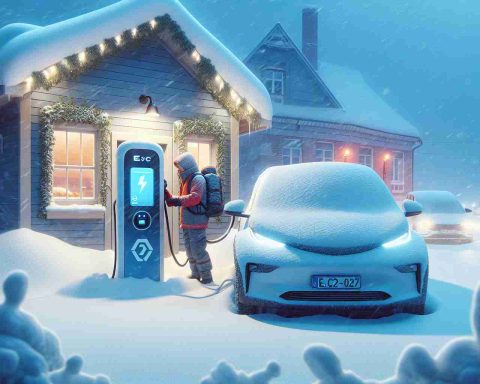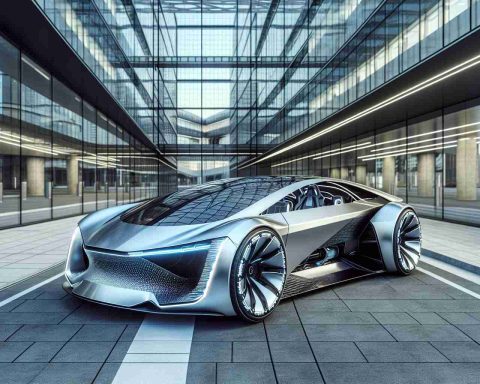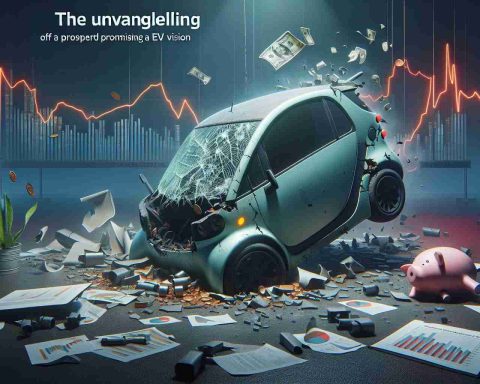As the electric vehicle (EV) market evolves, two major players, Tesla and Rivian, have experienced contrasting fortunes in 2024. While Tesla’s stock soared, Rivian witnessed a staggering decline of approximately 43% in its share value.
When it comes to vehicle deliveries, Rivian managed to deliver 51,579 units in 2024—a modest increase from the previous year. This growth occurred despite production challenges, including a temporary shutdown for factory upgrades and supply chain issues. Conversely, Tesla faced its first-ever annual drop, with approx 1.79 million vehicles delivered, driven by fierce competition primarily in China and Europe.
Investors remain optimistic about Tesla’s future. The focus is shifting toward its ambitious goal of launching an autonomous robotaxi service. At a notable cybercab event, Tesla introduced a two-seat vehicle envisioned to cost under $30,000, with plans to begin production before 2027. However, the specifics regarding the technology and safety features remain vague, and there are prevailing concerns regarding Tesla’s autonomous driving history.
Rivian, on the other hand, aims for profitability by refining its manufacturing processes and reducing production costs. Its partnership with Volkswagen aims to enhance production capabilities, paving the way for its upcoming R2 SUV priced around $45,000, which is expected to attract a broader audience.
As 2025 approaches, both companies have potential catalysts for growth. While Tesla’s autonomous ambitions could lift its stock, Rivian’s focus on improving gross margins presents an exciting, albeit riskier, investment opportunity.
Broader Implications of the Electric Vehicle Landscape
The contrasting trajectories of Tesla and Rivian illustrate a pivotal moment in the electric vehicle (EV) market, one that could resonate throughout society and the economy. As investors and consumers shift their perspectives, these rival companies reflect larger trends shaping the automotive sector and global market dynamics.
The rise of electric vehicles holds profound implications for environmental sustainability. With governments worldwide pushing for cleaner energy alternatives, the increased adoption of EVs can significantly reduce carbon emissions, particularly in urban centers plagued by pollution. However, the environmental impact of battery production—often reliant on lithium and cobalt—raises urgent questions about resource extraction and its consequences on ecosystems.
Moreover, the ongoing competition between Tesla and Rivian may spark innovation that transforms not just automotive engineering but also production techniques. As Rivian partners with established manufacturers like Volkswagen, the synergy could accelerate the transition of traditional automakers into the EV realm, ultimately influencing consumer choices and altering long-standing automotive cultures.
Looking ahead, the quest for profitability will dictate the future of these companies and the broader market. Will Tesla’s focus on autonomous technology prove successful, or will Rivian’s approach of refining existing capabilities win over consumers? The outcomes could establish benchmarks for future innovations, shaping industry standards for years to come and potentially altering the global economy as reliance on fossil fuels wanes.
EV Showdown: Will Tesla’s Ambitions or Rivian’s Refined Strategy Lead the Way in 2025?
## The Electric Vehicle Market in 2024: Tesla vs. Rivian
In the rapidly evolving electric vehicle (EV) market, 2024 has been a pivotal year showcasing the contrasting trajectories of two major players: Tesla and Rivian. As Tesla’s stock surged, Rivian experienced a dramatic 43% decline in share value, illustrating the volatility and competitive nature of the EV sector.
Overview of Deliveries and Production Challenges
In terms of vehicle deliveries, Rivian reported a modest increase, delivering 51,579 units, despite facing production hurdles such as temporary factory shutdowns for upgrades and ongoing supply chain issues. Meanwhile, Tesla, despite its reputation for dominance, saw its first-ever annual delivery drop, totaling approximately 1.79 million vehicles. This decline was attributed to increased competition, particularly in the rapidly growing markets of China and Europe.
Tesla: Ambitions and Innovations
Investors remain upbeat about Tesla’s prospects. The company is ramping up efforts to introduce an autonomous robotaxi service, positioning itself at the forefront of an emerging market. Tesla showcased a new two-seat cybercab concept, aimed at retail pricing under $30,000, with production slated to commence before 2027. However, ambiguities remain regarding the technological advancements and safety measures of this initiative, especially given Tesla’s history surrounding autonomous driving controversies.
Rivian: Strategy for Profitability
In contrast, Rivian is concentrating on enhancing its production efficiency and reducing costs, striving for profitability amid challenging market dynamics. Its collaborative efforts with Volkswagen aim to bolster production capabilities, setting the stage for the upcoming R2 SUV—a model expected to retail around $45,000. Rivian’s product strategy targets a broader consumer base, appealing to both adventure-seeking consumers and everyday drivers.
Key Features and Innovations
– Tesla’s Autonomous Robotaxi: Intended to leverage cutting-edge technology, though details on functionality and safety standards are minimal.
– Rivian’s Upcoming R2 SUV: Positioned as an affordable yet feature-rich alternative in the growing SUV market, maintaining Rivian’s focus on adventure and sustainability.
Market Predictions and Trends for 2025
As we look toward 2025, the landscape for both companies continues to evolve. Tesla’s ambitious autonomous goals might serve as significant tailwinds, potentially elevating its stock value. Conversely, Rivian’s commitment to improving gross margins could present unique investment opportunities, albeit with higher associated risks.
Pros and Cons of Investing in Tesla and Rivian
Tesla
Pros:
– Strong brand recognition and market presence.
– Innovative advancements with plans for robotaxi service.
Cons:
– Recent drop in deliveries signifies growing competition.
– Uncertainty surrounding autonomous driving safety.
Rivian
Pros:
– Focus on production efficiency and cost reduction.
– Upcoming R2 SUV targeting mainstream market appeal.
Cons:
– Volatile stock performance and past production challenges.
– Dependence on strategic partnerships for manufacturing capabilities.
Conclusion: A Crucial Year Ahead
Both Tesla and Rivian are at critical junctures in their respective journeys. Tesla’s bold aspirations in automation stand in contrast to Rivian’s pragmatic approach to profitability and market expansion. As the EV market continues to grow, stakeholders and investors will be keenly watching how these strategies unfold as we approach 2025.
For more insights into electric vehicles and the latest industry trends, visit EV Market Insights.











